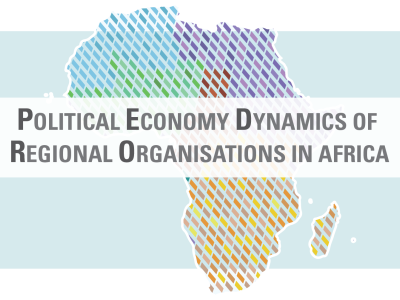
Joint Action for Food and Nutrition Security: The Challenge
The UN Secretary General, Ban Ki-Moon has issued a challenge - global zero hunger by the time he leaves office(1). This is an achievable goal. The political will to tackle hunger and increase access to food and the technical ability to deliver increased food production have never been stronger.
We should not underestimate the scale of the challenge. By 2030 the world will need to produce around 50 per cent more food and energy, together with 30 per cent more fresh water. Access to water, energy and food is challenged by demographic and climate changes, increasing resource scarcity coupled with greater demand from a growing middle class.
We have seen what demand can do to food prices. The recent food price spike tipped millions into poverty. Food prices have sparked riots and have prompted close interest in the relationship between civil unrest and the availability of affordable food.
The 2010 State of Food Insecurity issued by Food and Agricultural Organization of the United Nations (FAO) and the United Nations World Food Programme (WFP) has noted there are 22 countries affected by protracted crisis. In these countries, the distinction between ‘humanitarian response’ followed by ‘development assistance’ is not useful. Without the simultaneous delivery of immediate support and longer term investment to enable greater economic growth it is hard to see how the situation can improve.
It is clear that getting to zero hunger is not going to be easy. It is clear that we will not get there simply through business as usual. It will require extraordinary effort and clear focus.
What are the prerequisites?
First: the demand for change. People in countries facing food insecurity will demand coherent plans that make widespread hunger a thing of the past. Civil Society following up on the June 2012 Rio declaration on the right to food, the need for action to increase productivity and to take action to curb price volatility.
Second: harness technology and investment. We are a long way to from realizing the potential for production. For example in sub Saharan Africa average smallholder yields are at 1.2 MT/ha compared to 3MT/ha elsewhere in the developing world. Getting technology to the 80% of farmers in Africa who work less than 2 ha could have a major impact on hunger. Minimizing food losses along food value chains from farm to fork is also key. Systematic investment, well directed, must be put at the forefront of actions. We must radically increase the investment in agriculture.
Third: supporting the emergence of coherent national plans for agricultural investment and growth that contain clear goals for the reduction of malnutrition at their heart. This means that while investment will usually be directed to areas of high potential, we should not forget those who struggle on marginal land. A number of Governments have done so, for example through the Comprehensive African Agriculture Development Program (CAADP) or the 3N programme in Niger (les Nigériens Nourrissent le Niger).
It is in responding to the demand for action that the UN has much to offer.
What will the International Organizations do to help deliver the global change that is needed?
Firstly, help change the narrative. We need to accept that a large number of the most acutely food insecure face recurrent food crises. The International Organizations need to stand with country governments as they face the inevitable uncertainties and setbacks. Assistance should be focused on helping people become more resilient, offering viable livelihoods that can be sustained.
Secondly, accept that food crises will not go away overnight. The international system needs to anticipate crises and scale up responses early enough to preserve livelihoods. The tried and tested response mechanisms must remain on offer to countries and communities that need them.
Thirdly, respond coherently and in a way that is accountable to those most affected. This means supporting the production of comprehensive long term national and regional plans that have the political support of communities who can hold their Governments accountable. Where this is not possible, plans need to be made with input and consent from affected communities.
Fourthly, ensure decisive support, financing national plans, sharing technology and managing markets to control excessive price volatility.
Under the umbrella of the United Nations Secretary General’s High Level Task Force on Global Food Security, the International Organizations are delivering the needed change. It puts political and technical weight behind the aspirations of governments and people who are seeking to end hunger.
The International Organizations can also help by providing a forum and technical expertise for a process to adjust the norms and rules as to how assistance is delivered. The divide between ‘development’ and ‘humanitarian ‘ funding is increasingly seen as unhelpful in situations of recurrent crisis, but there are real political and practical problems about changing to a system of funding to a way of working where action is long term, uncertain and wide ranging.
While the International Organizations have sometimes in the past received a bad press for being too locked into their own silos of expertise, times are changing. Increased coherence of the International Organizations is a reality, a necessary reality to be able to rise to the zero hunger challenge. It is happening now. Join in.
David Nabarro is the United Nations Secretary-General’s Special Representative for Food Security and Nutrition and Coordinator of the UN System High Level Task Force on Global Food Security
Footnote
1.Rio+20: Secretary-General challenges nations to achieve ‘zero hunger’. Available at: http://www.un.org/apps/news/story.asp?NewsID=42304
This article was published in Great Insights Volume 1, Issue 7 (September 2012)


